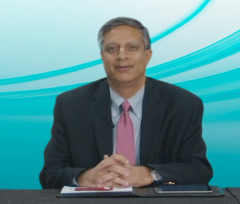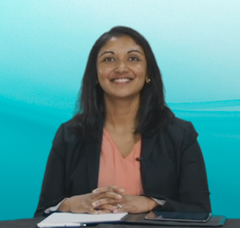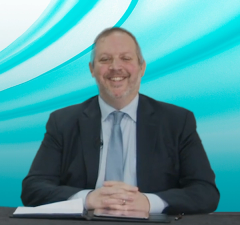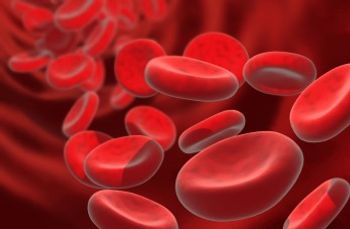
Blood-Based MRD Testing and Transplant-Ineligible Multiple Myeloma
Key opinion leaders describe the role of blood-based MRD testing in the transplant-ineligible multiple myeloma treatment landscape.
Episodes in this series

Sagar Lonial, MD: Dr Kaufman, I’m going to throw something out there that’s a little different from what we’ve been talking about. Let’s say we’re 10 years in the future and we’ve got a blood-based MRD [minimal residual disease] assessment. How could that impact the way you make clinical decisions?
Jonathan Kaufman, MD: With our current technology, doing a marrow base, we’re able to get down to 10-6. With that same assay and using blood, it’s 10-4, so we can’t use that. But maybe with blood tests 10 years from now using technology that’s coming online, including at Emory [University], and mass spectrometry, we could be at the point where we’re getting much deeper responses, although maybe not the same we can get from a marrow that’s 10-6.
In a future state where we’re getting deeper responses with all these new therapies, we might be able to turn how we manage myeloma, in terms of waiting for the paraprotein to rise or waiting for the patient to become symptomatic. We could get to the point where it becomes CML [chronic myelogenous leukemia] and we start treating patients and changing therapies at very deep levels of response. But the only way to do that is by relatively simple, careful monitoring, with an MRD test. In the future, I see very deep responses basing our treatments not on a paraprotein level rising to a certain place, or waiting for a patient to become symptomatic in the relapse setting, but looking at very low-level disease and making modifications.
Sagar Lonial, MD: The distinction you’re addressing is about MRD negativity by whatever test, whether it’s blood or marrow. We know it’s prognostic in the current situation. People who achieve those depths of response historically are going to do better anyway. Whether it’s CR [complete response], the old VGPR [very good partial response], or MRD, those are the patients who are going to do well.
When you take the patients who haven’t achieved MRD negativity and change their treatment, we don’t know whether you’ve changed their natural history. There are ongoing risk-adaptive maintenance and consolidation trials asking that question. Until we have data that say, “You didn’t achieve MRD negativity with what we thought was really good. We’re going to give you treatment Y instead of X. Now you did, and your PFS [progression-free survival] and OS [overall survival] were better,” we need those data to help make those kinds of decisions. Dr Joseph, until we have those where we can know about sustained MRD negativity and stopping therapy, talk about maintenance strategies in the transplant-ineligible patient population. Is there a point at which you flip a switch and say, “All right, now I’m dose reducing everything and going to maintenance,” or do you let it happen as it happens?
Nisha Joseph, MD: That depends on the regimen I’ve started with and the risk status of the patient. For example, with patients who I started on daratumumab-lenalidomide-dexamethasone, I tend to follow the study and keep them on daratumumab-lenalidomide-dexamethasone. If I think about tapering down or even off anything, it might be the dexamethasone in this older-patient population.
For those on RVd [lenalidomide, bortezomib, dexamethasone], if they’re standard risk, I tend to give at least 8 cycles. If they’ve achieved a VGPR, I consider downgrading them to lenalidomide alone. For high-risk patients, I get a little anxious about putting them on monotherapy, so I think similarly: 8 cycles, deep response. I consider a triplet, but I might switch out the bortezomib for ixazomib or lenalidomide-dexamethasone just to reduce neuropathy rates in this patient population.
Sagar Lonial, MD: You bring up an important point: just because they’re on treatment doesn’t mean they need to stay on dexamethasone. Most of us as a group, consensus-wise, tend to get the dexamethasone off by the end of the first year if not sooner. If you look head-to-head at dexamethasone vs whatever treatment from the old trials, the median PFS for the dexamethasone arm was 4 months. The dexamethasone is adding some benefit. It’s reducing adverse events. But even with daratumumab as a premedication, you don’t necessarily need steroids beyond the first few cycles of treatment. We’re pretty aggressive at trying to stop dexamethasone, and that’s why our patients come back to us.
Jonathan Kaufman, MD: In fact, it’s supported by data. The Italians did a randomized study of lenalidomide-dexamethasone for 9 cycles and then randomized to lenalidomide maintenance alone vs ongoing lenalidomide-dexamethasone, and there was no loss of PFS by stopping the dexamethasone. By 9 months, this patient population should be off dexamethasone.
Sagar Lonial, MD: Dr Nooka, to wrap up this discussion, in terms of duration of therapy, we heard Dr Joseph’s flavor on it. We heard about the benefit or lack thereof of steroids. Do you treat to progression? Do you treat to a specified end point or repeated end points? How do you do this?
Ajay Nooka, MD: We’ve seen time and again that continued treatment is the best way to maintain that response for the longest period of time. I don’t see it any different in a transplant-ineligible patient population relative to a transplant-eligible patient population. The only difference is the tolerance among an older-patient population compared with a much younger-patient population at the time of transplant. Unless I’m hitting any wall in terms of the adverse effects, I’m trying to continue to use that maintenance until progression.
Sagar Lonial, MD: That’s an important point. When patients ask me, “How long am I going to be on this, forever?” I look at them and say, “Forever isn’t a bad thing,” in the sense that if they can tolerate the treatment and the disease control is good, that’s a win for patients overall. This has been a great discussion on a challenging group of patients.
Transcript edited for clarity.
Newsletter
Stay up to date on recent advances in the multidisciplinary approach to cancer.






















































































